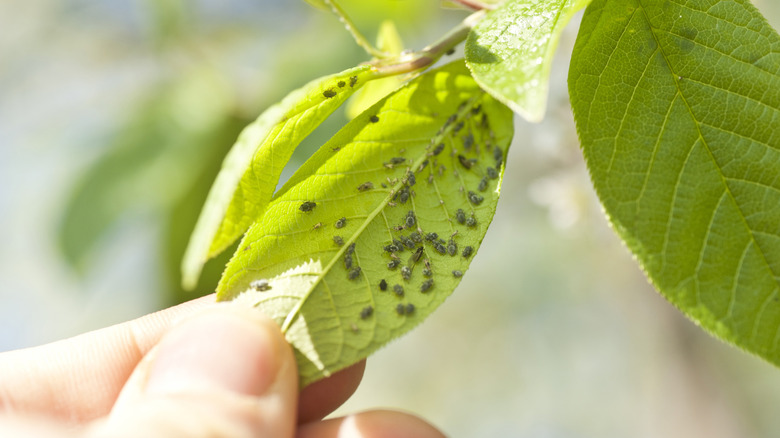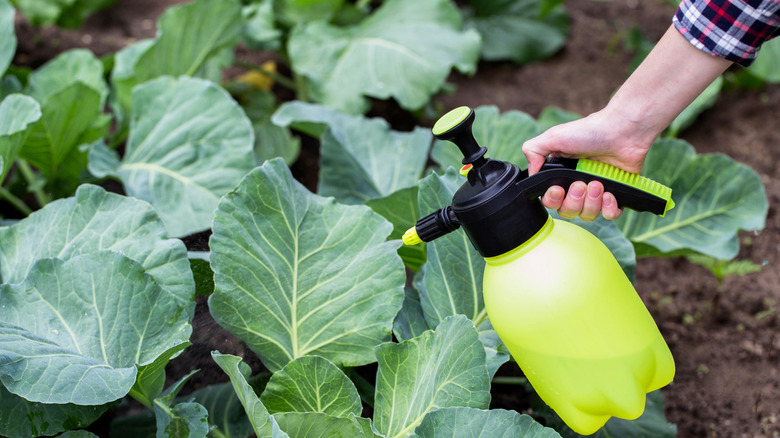Mistakes Everyone Makes When Dealing With Aphids In The Greenhouse
One of the biggest gardening mistakes you can make is dealing with pests incorrectly. While taking action is often necessary, overreacting can cause more harm than good. This is especially true when dealing with aphids, sometimes called plant lice. These tiny insects are just 1/8 of an inch long and feed on sap they extract from leaves, stems, and roots. While a colony can cause real damage and stunt plant growth, a few aphids in the greenhouse shouldn't incite panic.
For one, aphids are only interested in about a quarter of all plant species, so many of your greenhouse plants are sure to be unappetizing to these guys. What's more, aphids tend to be monophagous, which means they'll only snack on one specific type of plant (or its close relatives) and avoid all the others. That's why trying to fully eradicate them is the wrong approach, according to gardening pros. Yes, you want to keep population levels low, but you don't want to damage healthy plants in the process. So, while it may be tempting to immediately spray affected plants with a pesticide or rip them out entirely, there are better ways to go about it. Apart from pesticide use, the biggest mistakes to avoid when dealing with aphids in your greenhouse include introducing ladybugs, scattering diatomaceous earth, and overfeeding your plants with nitrogen fertilizer.
Don't make these mistakes when dealing with aphids
The advantages of growing plants in a greenhouse are many, but they only apply if you can keep pests at bay. However, dealing with aphids doesn't require an over-the-top approach. First, confirm their presence by looking for telltale signs, like sticky residue left on plants or curling and yellowing leaves. If you spot an insect itself, check for two tailpipes (which look like little antennae) that should be at the bottom of its abdomen. Once confirmed, you can get rid of aphids by picking them off by hand or pushing them off with a jet of water. What you don't want to do is spray pesticide, whether store-bought or homemade, everywhere, as this can harm healthy plants in the vicinity and eliminate any natural predators that might take care of the aphids for you.
Another common suggestion to ignore is introducing ladybugs to your greenhouse. Yes, they do eat aphids, but they're not sustainably sourced and are likely to be focused on escaping the greenhouse rather than pest control. Similarly, sprinkling diatomaceous earth on affected leaves is also often recommended, but this can be costly and is largely ineffective, as the slightest bit of water will wash it right off.
Also, it's true that aphids like to eat stressed plants, so you'll want to fertilize them as required. However, using too much fertilizer — especially one that is rich in nitrogen — can actually attract more aphids. Lastly, only ever remove a plant entirely if it's been heavily infested and is beyond salvage.

